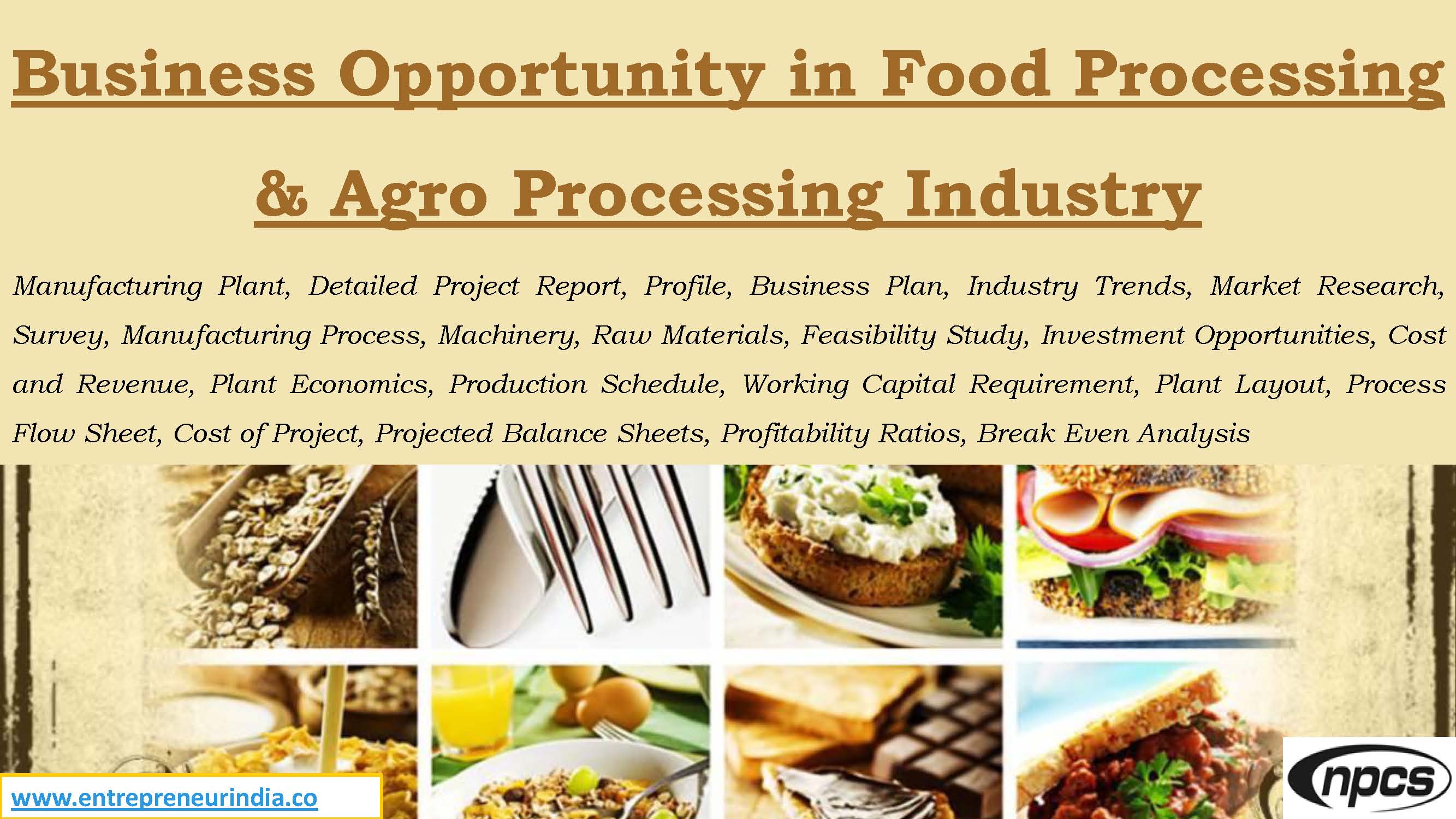
India is an agrarian economy with abundant agricultural produce, yet a significant portion of it goes to waste due to lack of processing infrastructure. This creates a massive untapped potential for entrepreneurs in the Food & Agro Processing sector. By converting raw crops into value-added food products, businesses can generate steady income, reduce wastage, and meet growing consumer demand. Moreover, rising health consciousness, packaged food consumption, and export opportunities make this a profitable domain for both rural and urban startups.
Food & Agro Processing Business | Profitable Opportunity
The Food & Agro Processing industry covers a wide range of value chains, including cereals, fruits, vegetables, dairy, meat, and spices. Entrepreneurs can begin small and gradually scale based on market demand and infrastructure availability. Below are top processing ideas, market potential, and the steps to get started.
Read Also :Business to Start in Jammu & Kashmir
1. Fruit Juice and Pulp Extraction
With fruits available seasonally across different regions, setting up a juice or pulp unit is an excellent way to extend shelf life and add value.
Key products:
-
Mango, guava, and litchi pulp
-
Mixed fruit juices
-
RTS (Ready-To-Serve) drinks
Moreover, pulp and concentrates can be sold to food manufacturers, bakeries, and ice cream units year-round.
2. Spices and Masala Powder Manufacturing
India is the land of spices, and processing them into powder or blends creates high-demand products like:
-
Turmeric, coriander, and chili powder
-
Garam masala, meat masala, and chaat masala
With minimal machinery and strong demand across urban and rural markets, this is a sustainable Food & Agro Processing business.
3. Pulses and Dal Milling
Pulses are an essential part of Indian diets. Processing whole pulses into polished dals ensures faster cooking and improved taste.
Required equipment includes:
-
Dehusking machines
-
Grading and polishing units
-
Weighing and packaging systems
Moreover, dal milling has low operational costs and a stable consumer base.
4. Flour and Millet Processing
Wheat, maize, bajra, and ragi can be processed into various flours. With increasing demand for gluten-free and traditional grains, millet flour is becoming popular.
You can produce:
-
Whole wheat flour (atta)
-
Multigrain flour mixes
-
Ragi and jowar flour
Moreover, branding it as organic or locally sourced can increase profitability.
5. Pickles, Sauces, and Chutneys
Traditional Indian condiments like pickles and chutneys have a huge market both locally and abroad.
Examples:
-
Mango and lime pickles
-
Tomato ketchup and schezwan sauce
-
Tamarind and mint chutney
Moreover, with attractive packaging and online selling, you can build a loyal customer base quickly.
6. Ready-to-Eat (RTE) and Ready-to-Cook (RTC) Products
Modern lifestyles demand convenience. The Food & Agro Processing segment of RTE and RTC products includes:
-
Instant upma and poha mixes
-
Frozen parathas and cutlets
-
Pre-cut vegetables and gravies
Moreover, these products have higher margins and demand across metros and working-class families.
7. Agro-Waste Processing and By-Product Utilization
Agro-waste such as husk, peels, and pulp residues can be used to manufacture:
-
Bio compost
-
Cattle feed
-
Biogas and briquettes
Moreover, this creates a circular business model and reduces environmental pollution.
8. Dehydrated Fruits and Vegetables
Drying fruits like mango, banana, and papaya, or vegetables like onions, garlic, and tomatoes ensures long shelf life and ease of transport.
Popular products:
-
Fruit chips
-
Vegetable flakes and powders
-
Soup premixes
Moreover, dehydration units can serve hotels, airlines, and packaged food brands.
9. Cold Storage and Warehousing
Although not direct processing, providing cold storage facilities is a vital support service in the Food & Agro Processing chain.
Opportunities include:
-
Cold rooms for fruits, vegetables, and dairy
-
Ripening chambers for bananas and mangoes
-
Warehousing for pulses, grains, and spices
Moreover, this business can generate rental income and government incentives.
10. Dairy Product Manufacturing
Milk can be processed into various value-added products like:
-
Paneer, ghee, and butter
-
Flavored milk and lassi
-
Yogurt and shrikhand
Moreover, a mini-dairy plant can be started with local milk collection and basic pasteurization setup.
Government Support & Schemes
The Indian government promotes Food & Agro Processing through various schemes like:
-
PMFME (Pradhan Mantri Formalisation of Micro Food Enterprises): Credit-linked subsidy for micro processors
-
MoFPI Mega Food Parks: Cluster-based infrastructure for processing units
-
NABARD Support: Loans and grants for agro startups
-
Operation Greens: Focused support for tomato, onion, and potato processing
Moreover, these schemes cover technical assistance, brand building, marketing, and cold chain development.
Licenses & Legal Requirements
To start a Food & Agro Processing unit, you must secure:
-
FSSAI Registration (Mandatory)
-
GST and Udyam Registration
-
Local trade license
-
Pollution Control Board clearance (for medium-large units)
-
Factory license if employing more than 10 workers
Moreover, export-oriented units require APEDA registration and compliance with international standards.
Investment and Profitability
Investment depends on the scale and type of processing unit:
| Business Type | Estimated Investment | Monthly Profit |
|---|---|---|
| Pickle/Chutney Unit | ?2–5 lakhs | ?40,000–?1 lakh |
| Spice Processing | ?5–10 lakhs | ?60,000–?1.5 lakhs |
| RTE Product Line | ?10–25 lakhs | ?1–3 lakhs |
| Juice & Pulp Unit | ?8–15 lakhs | ?75,000–?2 lakhs |
Marketing and Sales Strategy
To ensure profitability, businesses must focus on both B2B and B2C sales:
-
Local kirana stores and wholesale markets
-
Distributors and modern retail chains
-
Online marketplaces (Amazon, Flipkart, BigBasket)
-
Own website with regional SEO optimization
-
Export agents and trade fairs
Moreover, using attractive packaging and health branding can increase repeat purchases and consumer trust.
See Also :Curcumin Extraction
Conclusion
The Food & Agro Processing sector is not just an economic opportunity—it’s a national priority to ensure food security, farmer income, and rural development. With low-to-moderate investment, entrepreneurs can launch sustainable ventures that transform raw produce into profitable products. Moreover, government incentives, easy-to-setup infrastructure, and rising consumer demand make this one of the best industries for new business entrants. Whether you’re based in a village or urban hub, food processing is your gateway to building a scalable and impactful agro-enterprise.





